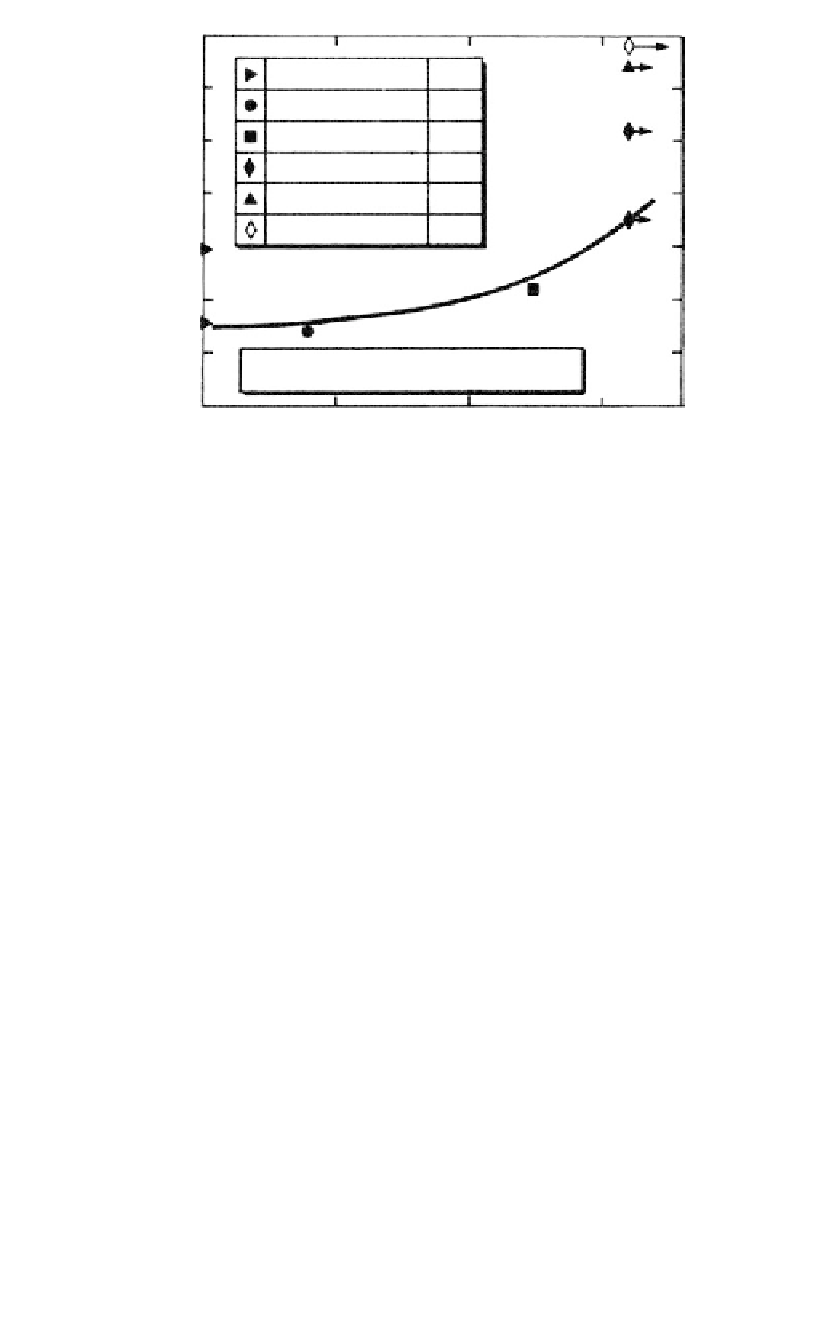Environmental Engineering Reference
In-Depth Information
F
C
10
2
y
W.E.S. LAB TESTS
80
OGISHIMI FILL
KAWAGISHI-CHO
FILL
1y
(N
1
)60
D
R
C
30y
100y
100y
100y
NIIGATA SAND
NIIGATA SAND
SIZEWELL SAND
∗
(
∗
) OVERCONSOLIDATED
60
F
C
F
40
F
AVER
F
F
FINE SAND
D
50
0.4 mm
C
COARSE SAND
D
50
0.4 mm
20
10
1
1
10
AGE OF DEPOSIT (YEARS)
100
Figure 6.34. Effect of aging of the soil on SPT resistance (Jamiolkowski et al., 1988).
Robertson and Campanella (1984) and two other methods were to be preferred. The
Robertson and Campanella (1984) method is simple to use and is shown in
Figure 6.35
.
They indicate that:
-
The method applies to normally consolidated, uncemented, moderately incompressible
(grains), predominantly quartz sands but can be used for silty sand, sandy silt, sand and
gravelly sand;
-
For highly over-consolidated sands
may be up to 2° lower than predicted from
Figure 6.35;
-
For highly compressible sand (e.g. sand with many shells, or mica pieces) the method
predicts conservately low friction angles. For the sands included in Robertson and
Campanella's analysis the effect could be up to 3°.
The in-situ methods described give peak strength (not large strain, steady state strength)
and do not appear to account for any curvature of the strength envelope. Hence if it is
intended to construct a large dam on such a foundation, it may be necessary to account
for this by using somewhat lower strengths. The Jamiolkowski et al. (1985) method
allows for this.
6.1.9.2
Laboratory tests
Laboratory tests to determine the effective friction angle of granular materials are
described in ASTM and British standards and in Head (1985).
The most difficult aspect is to be able to prepare the sample at the correct relative den-
sity. Coarse grained materials (containing gravel) may have to be re-graded so they can be
tested. The normal procedure is to prepare soils with a particle size distribution finer than
and parallel to the actual.
6.1.9.3
Empirical estimation
A good guide to the strength of compacted sand and sandy gravel is to use the relative
density specified (or expected), and particle size and use
Figure 6.33
.

